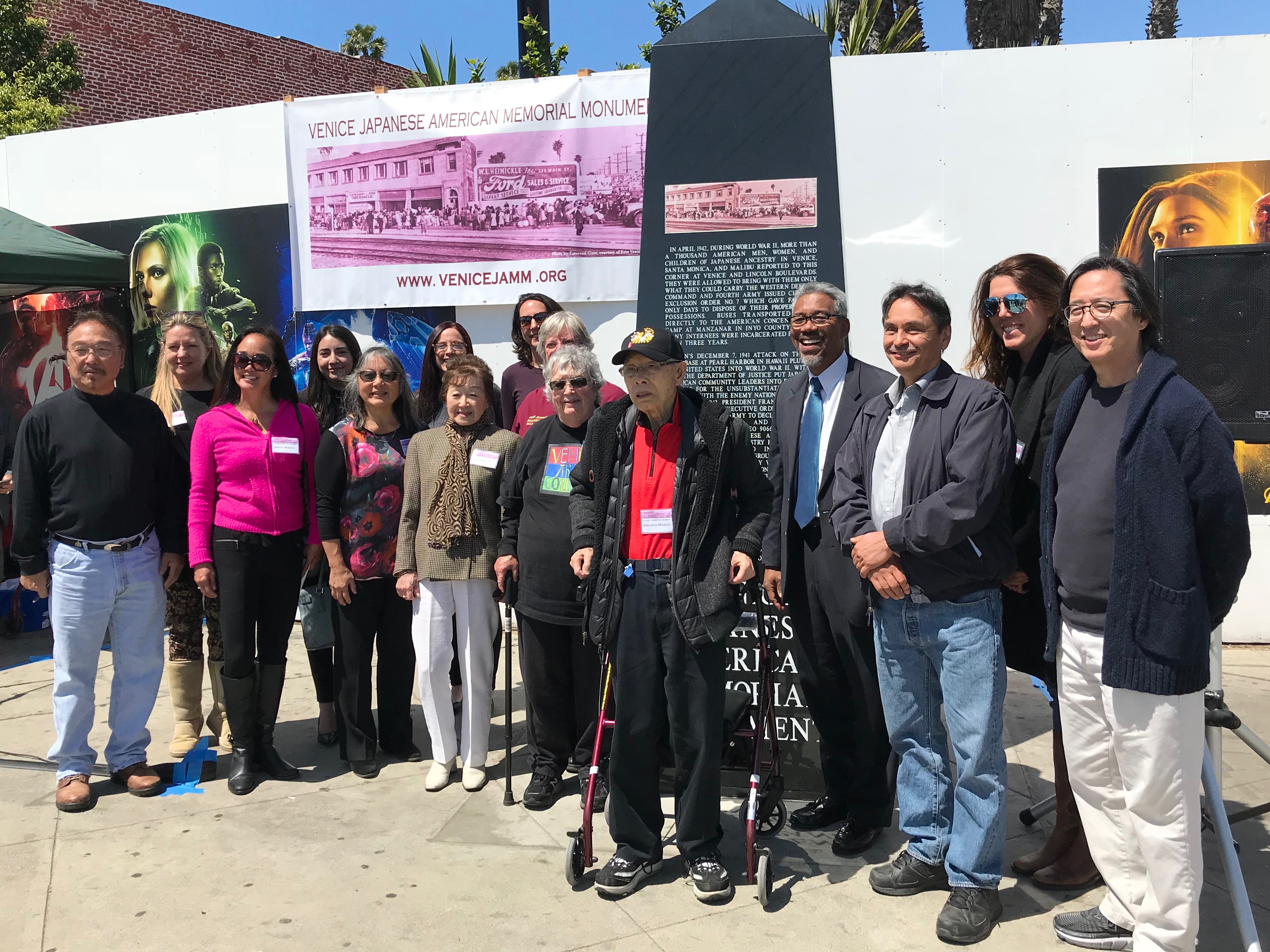Remembering the Japanese American experience in Venice during WWII.
By Sam Catanzaro
In April of 1942, Arnold Maeda was 15 years old when he and his father Takeda were forcibly removed from their home and lined up on the northwest corner of Lincoln Boulevard and Venice Boulevard to be taken to the War Relocation Authority camp at Manzanar as prisoners.
“Instead of being worried about where we were going, I was obsessed with the fact that I had parted with my constant companion, my pet dog Boy. For a 15-year-old, that was unforgettably traumatic,” reads Arnold Maeda’s quote inscribed on a monument at the very corner where he and thousands of other people of Japanese ancestry were forced to report to in 1942.
76 years later, On Thursday, April 19, 2018, Arnold Maeda and his brother Brian Maeda – who was born in Manzanar – were in attendance, alongside other former internees, at the Venice Japanese American Memorial Monument (VJAMM) Commemoration on the northwest corner of Lincoln Boulevard and Venice Boulevard. The event was celebrating the one-year anniversary of the completion of the monument and the 30-year anniversary of the passage of the Civil Liberties Act, while remembering the 76-years since the signing of Executive Order 9066, which authorized the removal of American citizens of Japanese ancestry from their homes.

“Why here? Well about 1,000 people of Japanese ancestry from Venice, Santa Monica and Malibu reported to this corner for the transport to Manzanar in April 1942,” said VJAMM Committee Member Phyllis Hayashibara. “And why now? So that such a violation of civil rights would never happen again to any identifiable minority group based solely on a group characteristic.”
VJAMM is an ad hoc group comprised of former internees and concerned citizens and has been working on this memorial since 2010. The idea for the memorial, however, originated amongst the Venice community of activists and artists after the September 11, 2001 terrorist attacks, which prompted some people in the United States to call for the roundup of anyone who fit the description of a terrorist.
“In the months after 9/11, many Venetians, including members of our party, were very alarmed by all the flag-waving around us,” said Alice Stek of the VJAMM Committee and as a member of the Venice Peace and Freedom Party. “It made us worry that something similar to the Japanese American incarceration could happen again.”

In attendance alongside VJAMM Committee members at the ceremony were various lawmakers, musicians and local activists, who spoke about the significance of memorials like the VJAMM to ensure an accurate account of history is told and passed down through generations.
“We do this because otherwise the stories of the oppressed are told by the oppressors, and they lie, and we don’t know what happened,” said Becky Dennison, Executive Director of Venice Community Housing. “Oppression changes over time and hopefully we make progress and things get better.”

More information about the VJAMM can be found at http://venicejamm.org, or by visiting the memorial itself on the northwest corner of Lincoln Boulevard and Venice Boulevard.

























